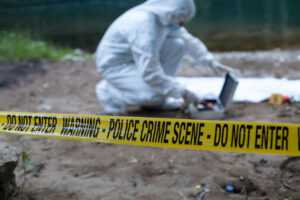Trauma cleanup is a crucial service that involves the cleaning and restoration of a space where traumatic events like accidents, crimes, deaths, or biohazard incidents have occurred. This service is essential for ensuring the safety and well-being of individuals, as exposure to biohazards and pathogens can pose serious health risks.
The importance of trauma cleanup cannot be overstated, as it not only helps prevent the spread of diseases and potential infections but also plays a vital role in offering support to those affected by the traumatic event. By efficiently and effectively removing all traces of the incident, our trauma cleanup professionals at ZBM Inc. can help ease the burden experienced by the individuals involved. Keep reading to learn more about how we can help.
Understanding Trauma Cleanup
The primary goal of trauma cleanup is to decontaminate the area, eliminate any health risks, and restore the space to its original condition. There are various types of trauma situations that may require cleanup, each presenting unique challenges and risks.
Examples of Situations That Require Trauma Cleanup
One common example is biohazard cleaning, which involves the remediation of scenes where blood, bodily fluids, or tissues are present. These scenarios can stem from accidents, crime scenes, or unattended deaths, requiring thorough cleaning and disinfection to ensure safety and prevent the harmful spread of diseases.
Another situation that often requires trauma cleanup is hoarding cleanup. Hoarding can lead to hazardous living conditions due to excessive clutter, biohazards, and unsanitary environments. The cleanup process involves removing clutter, sanitizing the area, and restoring the space to a habitable condition. Hoarding cleanup requires patience, sensitivity, and an understanding of the emotional challenges faced by individuals affected by hoarding disorder.
Overall, trauma cleanup professionals play a critical role in restoring safety and peace of mind in challenging and sensitive situations. Expertise, attention to detail, and compassion are all essential in addressing the specific needs of each situation and helping individuals and communities recover from traumatic events.
Emotional and Psychological Considerations
Trauma cleanup can leave a deep emotional and psychological impact on individuals, whether they are directly involved in the cleanup process or simply witnessing the aftermath. For any professional in the field, it is important to understand the sensitive nature of these situations and the toll they can take on people’s mental well-being.
At ZBM Inc., being sensitive in various trauma cleanup situations is our top priority in order to provide a supportive environment for everyone involved. This includes not only our clients directly impacted by the traumatic event but also our own cleanup crew.
Steps Involved in Trauma Cleanup
1. Assessment of the Scene
When a traumatic incident occurs, the first step involved in trauma cleanup is the assessment of the scene—specifically, evaluating the extent of the damage and the potential risks present. This process involves examining the scene to determine the type of trauma that has occurred, such as a crime scene, accident, or biohazard situation.
During the assessment, our professionals carefully inspect the area for any hazardous materials, such as blood, bodily fluids, or other biohazards. It is crucial to identify and address these hazards to ensure the safety and health of everyone involved in the cleanup process. Additionally, documenting the scene through photographs and detailed notes is essential for creating a comprehensive plan for cleanup and restoration.
Overall, the assessment stage sets the foundation for the entire cleanup process and guides the professionals on the necessary steps to restore the scene to a safe and habitable condition.
2. Removal of Biohazardous Materials
In the process of trauma cleanup, the second crucial step is the removal of biohazardous materials. This step is critical for ensuring the safety and well-being of both the cleanup crew and the individuals in the affected area. Biohazardous materials include bodily fluids, blood, tissues, and other potentially infectious substances that may pose serious health risks if not handled properly.
The removal of biohazardous materials is a task that requires careful planning and execution. It involves wearing the appropriate personal protective equipment, such as professional-grade gloves, masks, and goggles, to prevent exposure to harmful pathogens. Specialized tools and cleaning agents are used to properly disinfect and decontaminate the affected area, ensuring that all traces of biohazardous materials are safely removed.
3. Cleaning and Disinfection
After the removal of biohazardous materials in trauma cleanup, the third crucial step is the thorough cleaning and disinfection of all remaining surfaces and items. This step is fundamental in ensuring the safety and well-being of any future occupants of the space. During this important task, meticulous attention to detail is essential to completely eliminate any remaining traces of biohazards and prevent the spread of harmful contaminants.
Using specialized, hospital-grade cleaning agents and equipment, the cleanup crew meticulously disinfects and sanitizes all surfaces, including walls, floors, furniture, and personal belongings. Each item is carefully inspected to ensure no biohazardous material is left behind. By following strict protocols and industry best practices, the cleanup crew ensures that the space is safe for future use and occupation.
4. Deodorization and Restoration
Deodorization and restoration are the final crucial steps in trauma cleanup that cannot be overlooked. After the physical remnants of a traumatic event have been removed, the lingering odors and stains must be addressed to restore the affected space back to its original state. Deodorization is a key part of the process, as traumatic incidents often leave behind strong and unpleasant smells that can be overwhelming and emotionally distressing.
Our trauma cleanup professionals utilize specialized equipment and techniques to effectively deodorize the area. This may involve using ozone generators, thermal fogging machines, or other deodorizing agents to neutralize and eliminate odors at their source. In addition to deodorization, the restoration of the affected space is also critical. This can include repairing stained surfaces and safely removing damaged materials.
By completing these final steps, our professional trauma cleanup team aims to help bring closure and a sense of normalcy back to the space, allowing individuals to move forward from the traumatic event.
Why Choose ZBM Inc. for Crime Scene and Trauma Cleanup Services?
When it comes to crime scene and trauma cleanup services, ZBM Inc. stands out as a top choice for those in need. With years of experience in the field and multiple certifications and accreditations, our team brings a wealth of knowledge and expertise to every job we tackle. Our dedication to providing thorough and efficient cleanup services is unmatched, making us a trusted name in the industry.
We understand the deeply sensitive nature of trauma cleanup and approach each job with care and respect. Our team is fully trained and equipped to handle any situation, ensuring that the cleanup process is done safely and effectively. Contact us today at (920) 262-9471 to learn more about our services.


